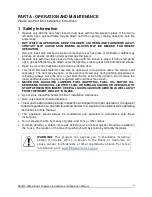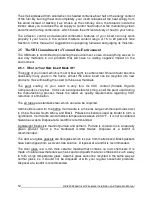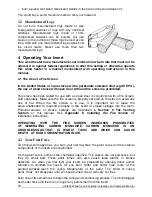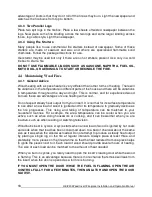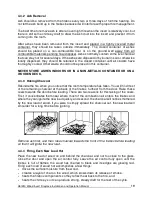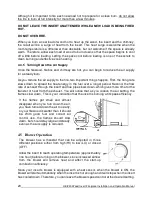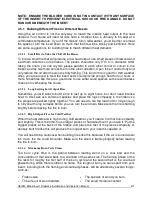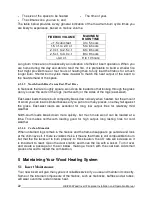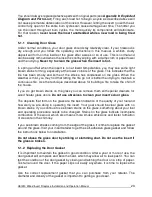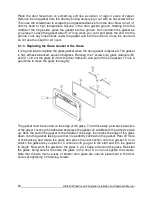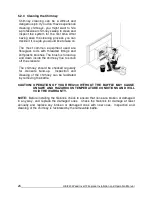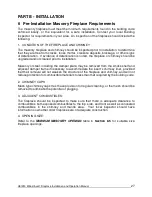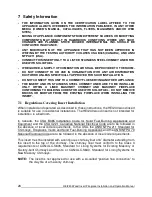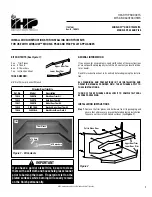
HEI240 Wood Insert Fireplace Installation and Operation Manual
13
3 Fuel
MATERIALS THAT SHOULD NOT BE BURNED
•
GARBAGE;
•
LAWN CLIPPINGS OR YARD WASTE;
•
MATERIALS CONTAINING RUBBER, INCLUDING TIRES;
•
MATERIALS CONTAINING PLASTIC;
•
WASTE PETROLEUM PRODUCTS, PAINTS OR PAINT THINNERS, OR ASPHALT
PRODUCTS;
•
MATERIALS CONTAINING ASBESTOS;
•
CONSTRUCTION OR DEMOLITION DEBRIS;
•
RAILROAD TIES OR PRESSURE-TREATED WOOD;
•
MANURE OR ANIMAL REMAINS;
•
SALT WATER DRIFTWOOD OR OTHER PREVIOUSLY SALT WATER
SATURATED MATERIALS;
•
UNSEASONED WOOD; OR
•
PAPER PRODUCTS, CARDBOARD, PLYWOOD, OR PARTICLEBOARD. THE
PROHIBITION AGAINST BURNING THESE MATERIALS DOES NOT PROHIBIT
THE USE OF FIRE STARTERS MADE FROM PAPER, CARDBOARD, SAW DUST,
WAX AND SIMILAR SUBSTANCES FOR THE PURPOSE OF STARTING A FIRE IN
AN AFFECTED WOOD HEATER.
BURNING THESE MATERIALS MAY RESULT IN RELEASE OF TOXIC FUMES OR
RENDER THE HEATER INEFFECTIVE AND CAUSE SMOKE.
3.1
How to Prepare or Buy Good Firewood
3.1.1 What is Good Firewood?
Good firewood has been cut to the correct length for the insert, split to a range of sizes
and stacked in the open until its moisture content is reduced to 15 to 20 per cent.
3.1.2 Tree Species
The tree species the firewood is produced from is less important than its moisture content.
The main difference in firewood from various tree species is the density of the wood.
Hardwoods are denser than softwoods. People who live in the coldest regions of North
America usually have only spruce, birch and poplar, other low-density species to burn and
yet they can heat their homes successfully.
Homeowners with access to both hardwood and softwood fuel sometimes use both types
for different purposes. For example, softer woods make good fuel for relatively mild
weather in spring and fall because they light quickly and produce less heat Softwoods are
not as dense as hardwood, so a given volume of wood contains less energy. Using
softwoods avoids overheating the house, which can be a common problem with wood
heating in moderate weather. Harder woods are best for colder winter weather when more
heat and longer burn cycles are desirable.







